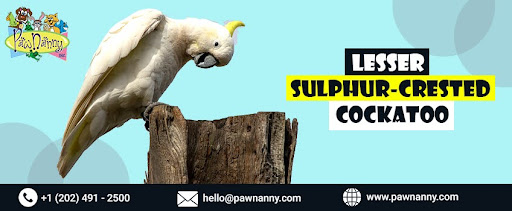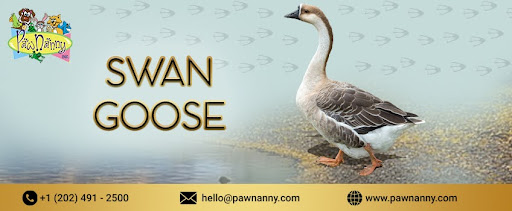
Lesser Sulphur-Crested Cockatoo
Scientific Name: Cacatua Sulphurea Parvula
Flock Members: 10 to 50 individuals
Size: About 12 to 14 inches
Weight: Approximately 10 to 14 ounces
Hypoallergenic: No
Lifespan: 20-30 years
Behavior
The Lesser Sulphur-Crested Cockatoo is a lively small parrot living in the territories of Australia and New Guinea. Measuring 28 to 33 centimeters long and small to medium-sized, this hearty parrot has a white color, bright yellow crest, and yellow undertail coverts. They are quite interactive birds and remarkable and active players all the time. Lesser Sulphur-Crested Cockatoos are intelligent birds whose social interaction with their parents is almost affectionate when domesticated. They will be very attention-seeking and must be included in various family activities. They can become aggressive if not well taken care of and encouraged, hence becoming destructive to property, chewing on things like shoes, and plucking their feathers - so book overnight stay services for pets whenever you have to leave them.
A cage size more spacious than is usually recommended is necessary, they will have to have many toys to play with, and there is minimal need for them to spend daily time indoors with more opportunities for physical and mental stimulation inside the cage. When trained politely they require the use of positive attributes only so that they learn tricks and first words. As long as these cute birds are given the socialization and training they deserve, these colorful little cockatoos can be very entertaining pets.
History
The Lesser Sulphur-Crested Cockatoo, scientifically known as Cacatua sulphurea, is a species of Cockatoo that is sizable and is naturally found in the regions of Indonesia, Timor-Leste, and the North Australian region. The animal has been a pet and companion parrot for several hundred years. When crossing through Wallacea and New Guinea, the European explorers mentioned that indigenous people tamed these birds.
It is estimated that the first Lesser Sulphur-Crested Cockatoo was taken from Indonesia to Europe in the seventeenth century as a caged bird. In the 19th century, and speaking of the Victorian period, parrots and cockatoos received the greatest attention and became extremely popular. The long-lived and social cockatoos were a favorite owing to their talent of mimicry and fun-loving nature. It also saw a boost in catching and selling wild cockatoos to sell as pets.
In the twentieth century, the birds of the Lesser Sulphur-Crested Cockatoo species were being bred or produced commercially in aviaries, yet the wild birds were still available. Today'sToday's ethical and professional apiculturists are interested in breeding rather than ''harvesting'' birds from the wild. Selective breeding over the years has given such coloration forms as the blue Lesser Sulphur-Crested Cockatoo. These parrots' constant breeding means they can stay popular companion pets. Modern aviculture is oriented toward conserving the species and the corresponding level of their welfare in captivity.
Breeding
Like other Cacatua cockatoos, Lesser Sulphur-Crested Cockatoos breed in tree cavities and are social in large groups as long as the breeding season is not involved. Breeding season for the Lesser Sulphur-Crested Cockatoo lasts from August to January, in the spring-summer period in Australia. At this time, the birds get paired as monogamous pairings involving the partner of the previous seasons. To bond before the reproducing phase, they get close and do mutual courtship and vocalization. The female will lay 2-3 eggs; both parents will proceed to hatch them after 30 days of incubation.
Like most parrots, the Lesser Sulphur-Crested Cockatoo male and female share duties of incubation and raising young ones. The male Hody feeds the chicks, and the female Hody feeds the chicks; the chicks fly out of the nest at about 8- 10 weeks. For several more months, the young birds continue to depend on the parents for food supply and interact with the other social needs such as learning how to forage and forming social relationships with their other colony members. Breeding before the year enhances high-flying success because it is a time when food is plenty in the spring and summer periods.
Looks and Health
Being a medium-sized cockatoo, the Lesser Sulphur-Crested Cockatoo looks gracious with its predominantly white feathers and a forward-crested head. It is chiefly white but has a slightly yellow underpart to the wings and tail. The crest is yellowish-white and curved elegantly forward over the head. The beak is dark grey, and the eyes are brown. It has a scaly pinkish-red area of skinless space around the eyes and beak region. As with other family members, the Lesser Sulphur-Crested Cockatoo has a heavy and sharp beak for mashing nuts and seeds, among others. Its tail feathers are longer in comparison with the other cockatoos. Overall, it is a dignified, elegant, graceful white cockatoo with a forward yellowish crest.
This Cockatoo is also one of the healthier bird breeds so long as they are properly cared for. However, they are more predisposed to different forms of bacterial, viral, or even fungus infections. These include psittacosis, psittacine beak and feather disease, aspergillosis, candidal infections, etc. These birds also experience gastrointestinal system trouble and hepatic lipidosis because of improper feeding. There is also the need for stability and low fat but high nutritional value. This includes cleaning the cage and its accessories, annual check-ups from the vet, and pet overnight stay services whenever needed; the Lesser Sulphur-Crested Cockatoo, on average, a bird will live for 20-30 years approximately if it is well tended to.
Food and Nutrition
Lesser sulfur crested Cockatoo is an Australian bird that feeds on seeds, nuts, and sometimes fruits and insects. Its natural food items include native seeds like Acacia, Eucalyptus, fruits, and berries. It is suggested that in captivity, they are fed on a commercial pelleted diet, which they are given supplemented with greens, carrots, apples, bananas, nuts, and other tidbits you might want to give them. Like almost all parrots, the Lesser Sulphur-Crested Cockatoo needs foods with vitamins A, D, and E for skeletomuscular health and other bodily structures and Calcium for the bones. Different foods and clean water should be provided to feed these intelligent and active birds. Supervision of the quantities consumed is that the right nutrients are consumed.
Conclusion
The Cockatoo of the Lesser Sulphur-Crested Cockatoo is considered smaller but has many abilities as the big cockatoos. They are entertaining in natural curiosity, vocal reproduces sounds, and can be playful or even clownish in movements and therefore make a good pet choice. They also need considerable attention and toys and games to stimulate them properly, so potential adopters must be ready to spend time. If raised in the right way from the time they are young, these cockatoos can get so accustomed to their human families that they become very attached to them. If you're interested in a small cockatoo bird with a lot of character, the Lesser Sulphur-Crested Cockatoo may be the bird for you. While requiring constant attention and devotion, this little Australian plant is guaranteed to enchant a homeowner for years! For more information or to book our pet's overnight stay services at Fairfax, visit PawNanny.com!










